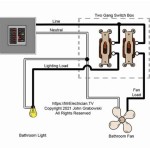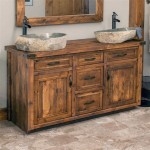What Size Pipe For Bathroom Sink
Choosing the correct pipe size for a bathroom sink drain is crucial for proper drainage and preventing clogs. While seemingly a minor detail, using the wrong size can lead to slow draining or even overflows. This article will guide you through the standard pipe sizes used for bathroom sinks and factors to consider for optimal performance.
Standard Pipe Sizes for Bathroom Sinks
The most common pipe size for bathroom sink drains is 1 1/4 inches in diameter. This size effectively handles the typical water flow from a bathroom faucet. While 1 1/2-inch pipes are sometimes used, they are generally considered overkill for a standard bathroom sink and can introduce unnecessary costs and complexity.
Understanding Drain and Vent Systems
A properly functioning bathroom sink drain relies on both the drain pipe and the vent system. The drain pipe carries wastewater away from the sink, while the vent pipe allows air to enter the system. This airflow prevents a vacuum from forming, which could slow or stop drainage. Vent pipes also help to regulate pressure and prevent sewer gases from entering the home. The vent pipe size is often 1 1/4 inches as well, matching the drain pipe.
Factors Influencing Pipe Size Selection
While 1 1/4 inches is the standard, certain situations might warrant a different pipe size. Factors to consider include:
- Sink Design: Some sinks, particularly those with high flow rates, might benefit from a 1 1/2-inch drain pipe.
- Local Codes: Plumbing codes vary by location and may dictate specific pipe sizes for bathroom sinks. Always consult local regulations.
- Distance to Main Drain: Longer drain runs might require a larger pipe size to prevent slow drainage.
Materials for Bathroom Sink Drain Pipes
Several materials are commonly used for bathroom sink drain pipes. Each has its pros and cons:
- PVC (Polyvinyl Chloride): PVC is a cost-effective and widely used material. It is durable, lightweight, and resistant to corrosion.
- ABS (Acrylonitrile Butadiene Styrene): ABS is another plastic pipe option similar to PVC, though slightly less common.
- Copper: Copper pipes are durable and resistant to corrosion but are more expensive than plastic options.
- Chrome-Plated Brass: Chrome-plated brass is typically used for the exposed portion of the drain pipe (the tailpiece) due to its aesthetic appeal.
P-Traps and Their Role in Drainage
The P-trap is a curved section of pipe located beneath the sink. Its purpose is twofold:
- Creating a Water Seal: The P-trap holds a small amount of water, which acts as a barrier, preventing sewer gases from entering the bathroom.
- Catching Small Objects: The curve of the P-trap can catch small objects like rings or jewelry that might accidentally fall down the drain, preventing them from entering and potentially clogging the main drain line.
Connecting the Drain Pipe
Properly connecting the drain pipe is essential to prevent leaks. Connections are typically made using slip-joint nuts and washers. These connections are designed to be hand-tightened, eliminating the need for specialized tools. Overtightening can damage the pipes and create leaks. Applying a small amount of plumber's putty to the connections can ensure a watertight seal.
Working with Existing Plumbing
When replacing an existing bathroom sink drain, it's important to determine the existing pipe size. If possible, use the same size pipe to ensure compatibility with the existing plumbing system. If changing the pipe size is necessary, appropriate adapters are available to connect different sizes.
Maintaining Your Bathroom Sink Drain
Regular maintenance can prevent clogs and ensure proper drainage. Simple practices include:
- Flushing with Hot Water: Periodically flushing the drain with hot water can help dissolve soap scum and grease buildup.
- Using a Strainer: A strainer placed over the drain opening can catch hair and other debris, preventing them from entering the drain pipe.
- Avoiding Chemical Drain Cleaners: While convenient, chemical drain cleaners can damage pipes over time. Opt for natural cleaning methods or a plumber's snake when dealing with clogs.
Consulting a Professional Plumber
While many homeowners are comfortable tackling basic plumbing tasks, consulting with a professional plumber is always recommended for complex installations or if you are unsure about any aspect of the process. A professional plumber can assess your specific situation, ensure compliance with local codes, and provide expert advice and installation. They can also advise on best practices for maintaining your plumbing system over the long term.

Pin On Plumbing
What Size Pipe Do You Use For A Sink Drain Quora

Drain Pipe Everything You Need To Know

Bathroom Sink P Traps Sanliv Sanitary Wares

How To Vent A Toilet Sink And Shower Drain

Bathroom Sink Plumbing Installation Diy Montreal
How To Install Bathroom Sink Drain Queen Bee Of Honey Dos
Can You Drain A Sink Into Toilet Vent Quora

Bathroom Sink Plumbing Installation Diy Montreal
Is The Same Pipe Used For Drainage From A Sink Shower And Toilet Quora
Related Posts







